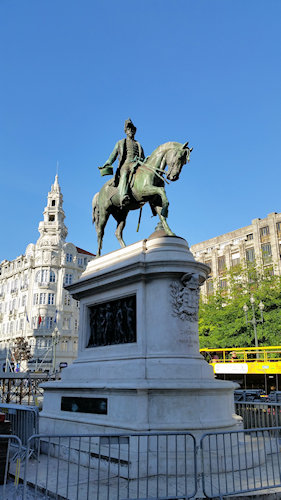

- The monument of King Peter IV was inaugurated
in 1866. He is riding a horse and holding the Constitution
that he had fought to protect during the Liberal Wars.
- Le monument du roi Pierre IV a été inauguré en
1866. Il monte un cheval et tient la Constitution qu'il a
lutté pour protéger pendant la guerre civile portugaise.
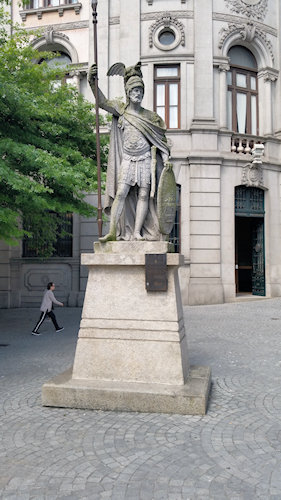

- Roman statue on Freedom Square in Porto
- Statue romaine sur la place de la Liberté à Porto
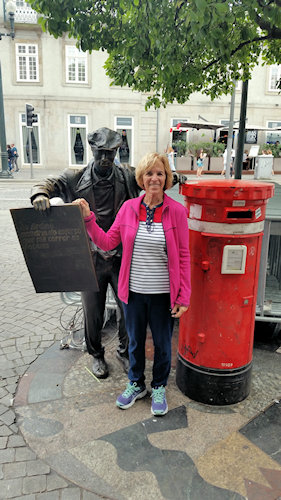

- O Ardina, the statue of a newspaper vendor
leaning on a mailbox on Freedom Square
- O Ardina, la statue d'un vendeur de journaux
appuyé sur une boîte aux lettres sur la place de la Liberté
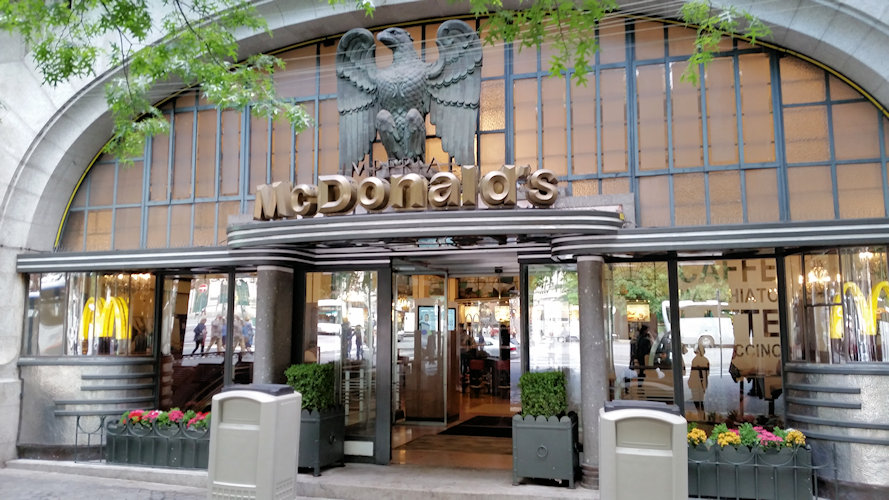

- The beautiful facade of a McDonald's Restaurant on Freedom Square in Porto
- La superbe façade d'un restaurant McDonald's sur la place de la liberté à Porto
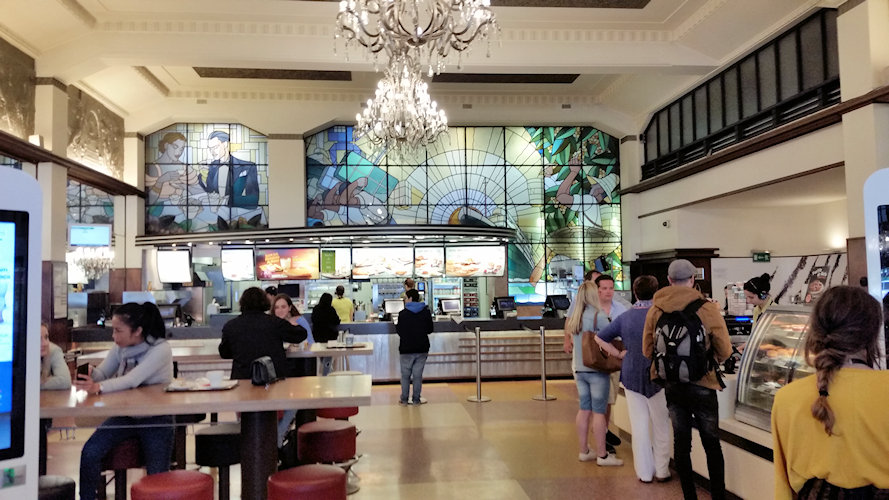

- The well-decorated interior of the McDonald's restaurant is not at all what we are used to here in North America
-L'intérieur bien décoré du restaurant McDonald's n'est pas du tout ce à quoi nous sommes habitués ici en Amérique du Nord
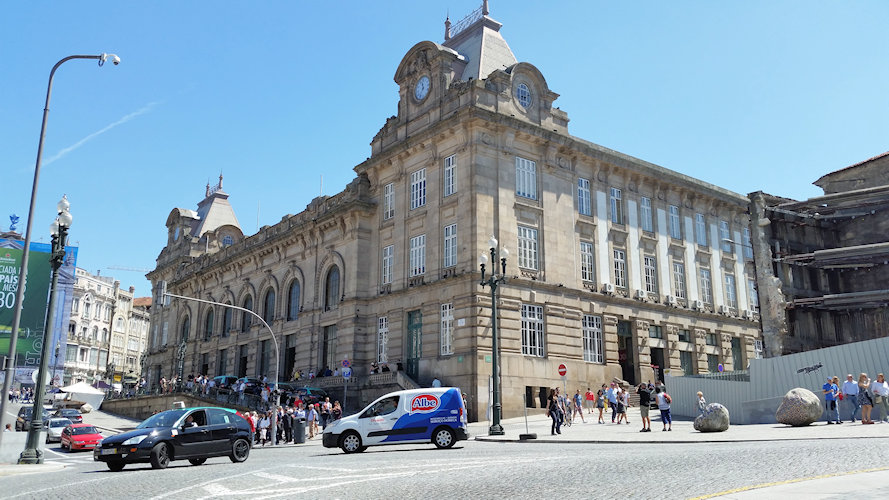

- The São Bento Railway Station is located in the historic centre of Porto, just a few steps from the Freedom Square. Its construction started in 1904.
- La gare de São Bento est située dans le centre historique de Porto, à quelques pas de la place de la Liberté. Sa construction a commencé en 1904.
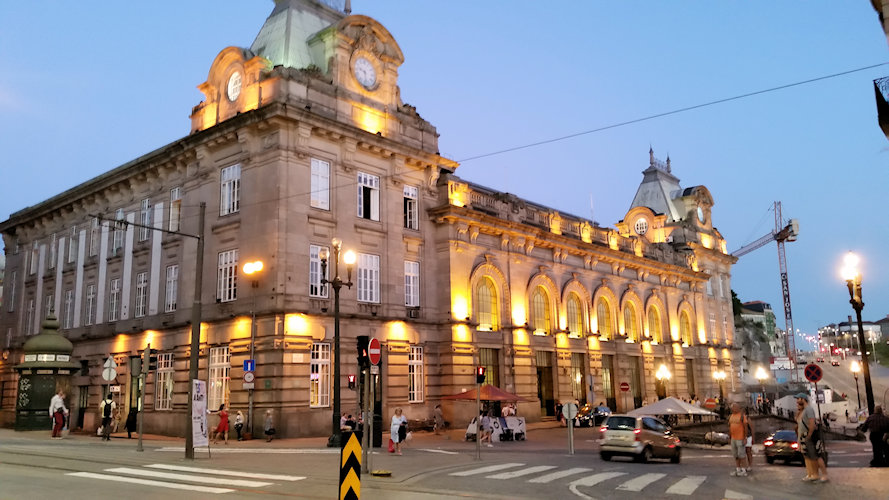

- The São Bento Railway Station at night fall. It is built on the site of an old Benedictine monastery, named São Bento de Ave Maria.
- La gare de São Bento à la tombée de la nuit. Elle est construite sur le site d'un ancien monastère bénédictin, nommé São Bento de Ave Maria.
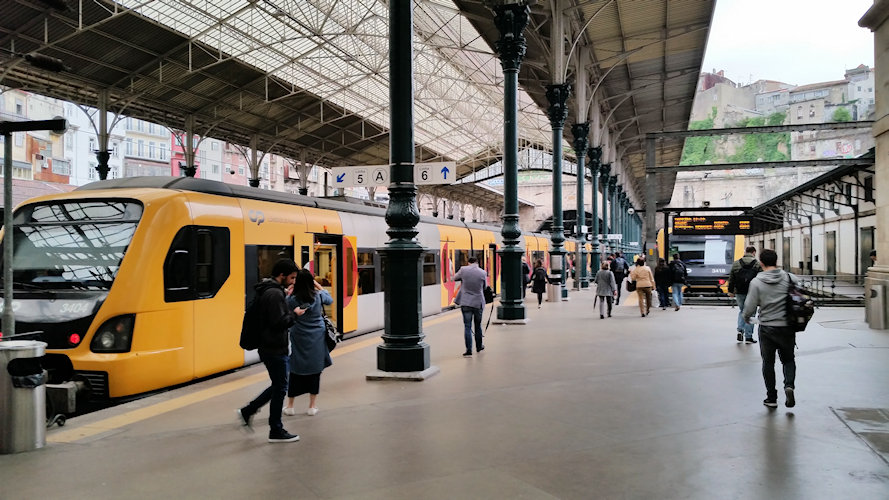

- One of the platforms at the São Bento Railway Station
- Un des quais de la gare de São Bento


- Decorated with more than 20,000 blue and white tiles, the interior of the São Bento Railway Station is breathtaking. The scenes
were created between 1905 and 1916 by Jorge Colaço (1868-1942), one of Portugal’s foremost azulejos painters.
- Décorée avec plus de 20.000 tuiles bleues et blanches, l'intérieur de la gare de São Bento est à couper le souffle. Les scenes ont été
créées entre 1905 et 1916 par Jorge Colaço (1868-1942), l'un des plus grands peintres d'azulejos du Portugal.
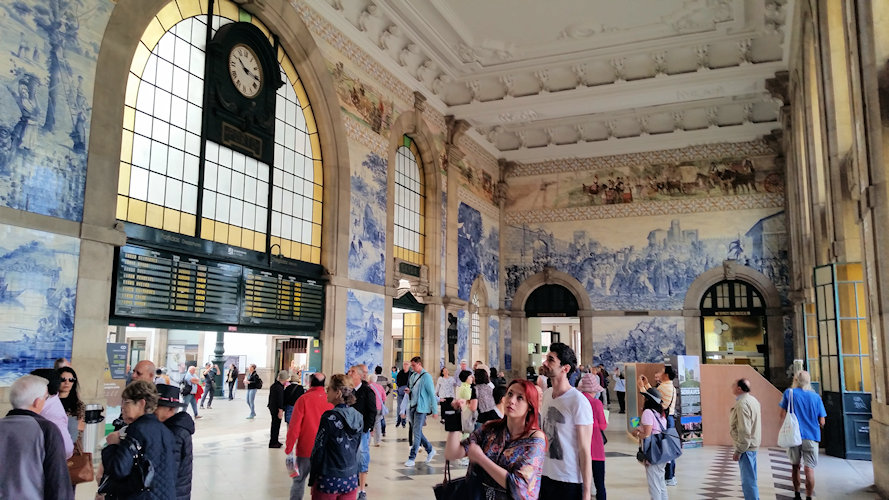

- The blue and white azulejos (painted ceramic tiles) represents historical Portuguese scenes and moments of the everyday life.
Above, a frieze in full color represents the history of transportation in Portugal.
- Les azulejos (carreaux de céramique peints) bleus et blancs représentent des scènes historiques du Portugal et des moments de la
vie quotidienne. Au-dessus, une frise en couleur représente l’histoire du transport au Portugal.
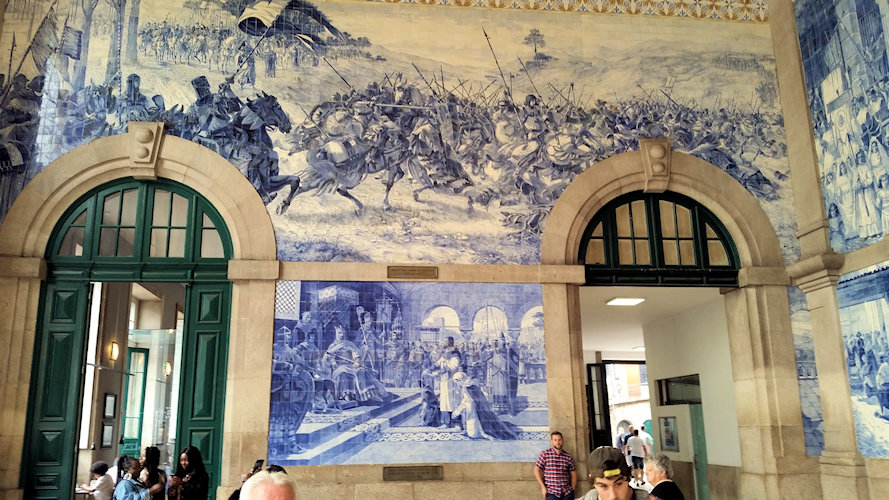

- On top, the Portuguese victory at the Battle of Arcos de Valdevez in 1140 or 1141. At the bottom, the meeting of Alfonso VII of
Leon and the King Egas Moniz during of the siege of Guimaraes in 1127.. Bottom, Alfonso VII of Leon
- En haut, la victoire portugaise à la bataille d'Arcos de Valdevez en 1140 ou 1141. En bas, la rencontre d'Alphonse VII de Léon et
du roi Egas Moniz pendant le siège de Guimaraes en 1127.
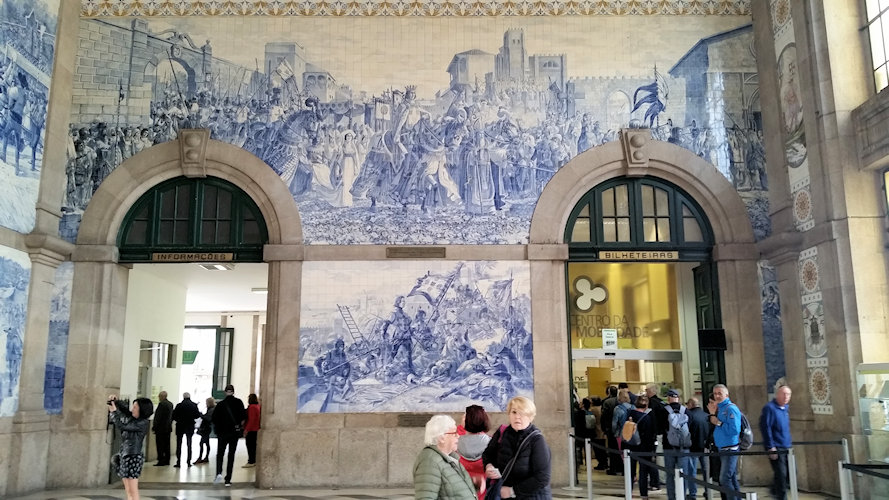

- On top, the newlywed King John I and Philippa of Lancaster entering Porto in 1387. At the bottom, the Conquest of Ceuta
which signifies the Portuguese colonial expansion in Africa in 1415.
- En haut, les nouveaux mariés le Roi Jean I et Philippa de Lancaster entrant à Porto en 1387. En bas, la conquête de Ceuta qui
signifie l'expansion coloniale portugaise en Afrique en 1415.
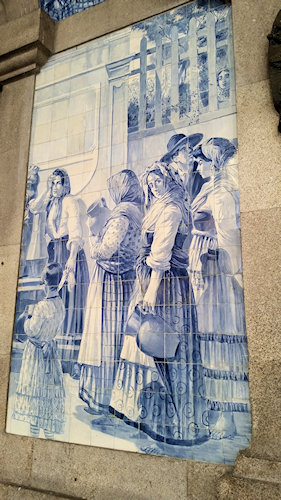

- Panel showing a scene of everyday life in the past
- Panneau montrant une scène de la vie quotidienne dans le passé